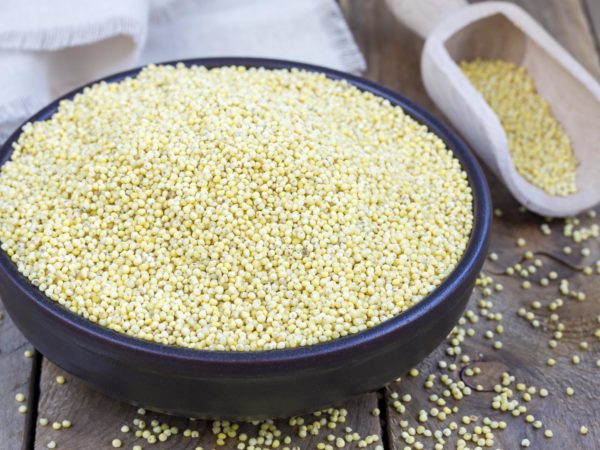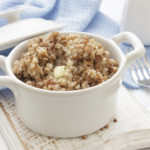Millet: A Good Grain?
What are the benefits of eating millet? Is it a good substitute for wheat?
Andrew Weil, M.D. | July 12, 2002

Updated on 3/30/2005
Rosie Daley, co-author of my book The Healthy Kitchen, is a big fan of millet, an African grain and a staple of the North African diet. It is also widely consumed in China and India, where it is used to make flatbreads. In this country, millet is usually found in birdseed, although farmers here do grow pearl (or pearled) millet for human consumption.
Nutritionally, millet is about as high in protein as wheat (about 4.2 grams per half-cup serving) and also provides niacin, vitamin B6 and folic acid along with some calcium, iron, potassium, magnesium and zinc. It doesn’t contain gluten so it can’t be used in breadmaking, but it is a nutritious alternative to wheat products for those who are allergic to gluten.
I wouldn’t call millet a substitute for wheat, but it is a nice addition to the diet. You can often substitute millet in recipes for buckwheat, rice or quinoa, and you may see it sold as couscous (although couscous usually is made from semolina, a wheat product). When baked into muffins, millet gives a nice crunch. Rosie Daley’s recipe for Multi-Grain Scones in The Healthy Kitchen (and in the Recipe section of my Web site) includes 2 tablespoons of millet. The scones are delicious and so filling that she promises you can eat half of one for breakfast and feel satisfied.
To cook millet as a grain instead of rice, just simmer 1/2 cup in 11/2 cups of liquid. If you leave it alone as it cooks, you’ll get fluffy grains like rice; if you stir frequently and add a little extra liquid during cooking, you’ll get a dish that resembles mashed potatoes. It takes about 25 minutes to cook millet by simmering.
I recommend buying organic millet, rice and other grains at a health food store. Store them in tightly sealed jars on the pantry shelf, except during very hot, humid weather when it may be best to keep them in the refrigerator.
Andrew Weil, M.D.











